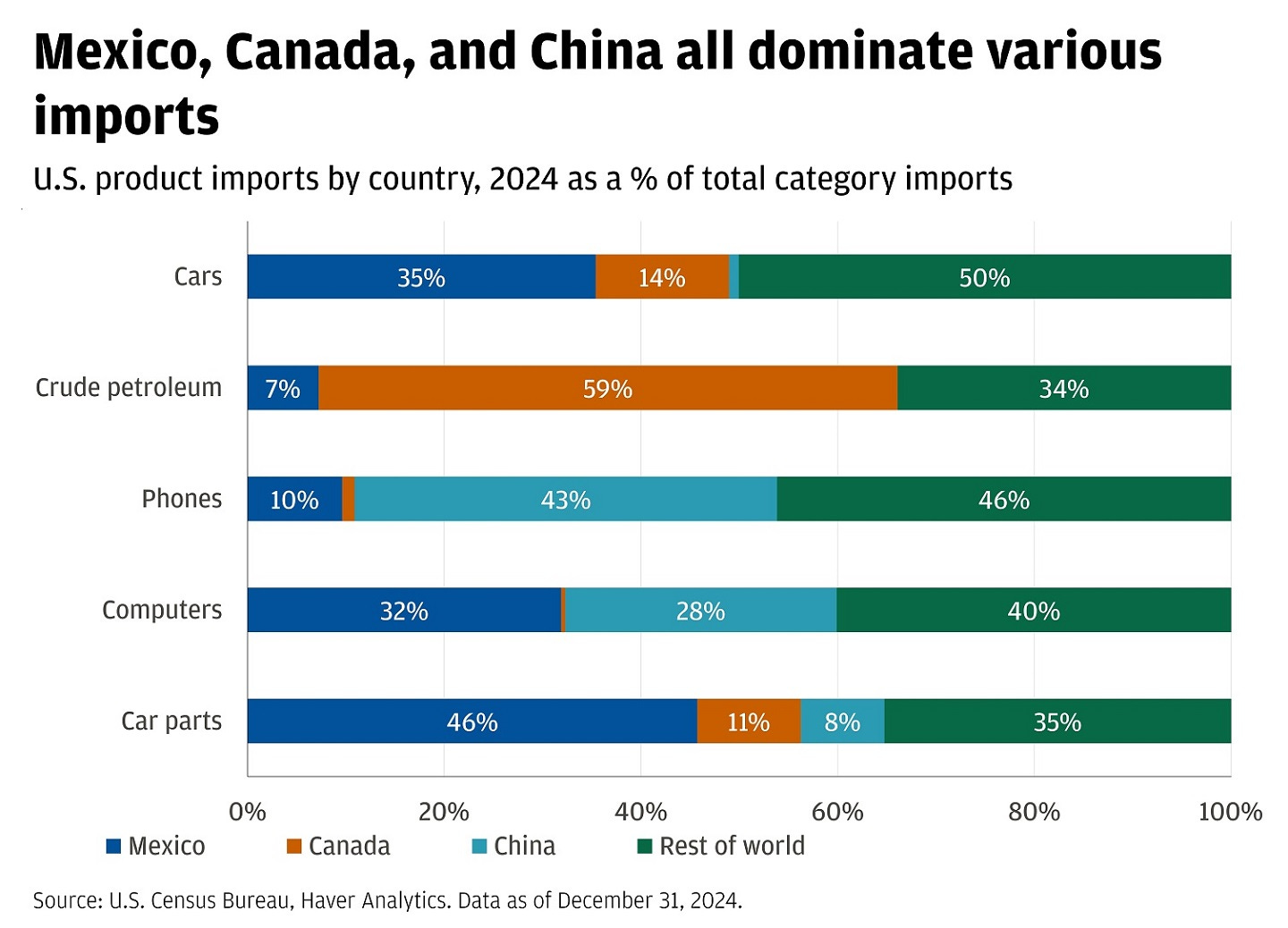The Great American Reset: Making Sense of Trump's Economic Overhaul
Tariffs, AI, and the Uncertainties Reshaping the American Economy – In a 3-Minute Read
The Gist:
The American economy is undergoing a profound transformation – and it's happening faster than most people realize. Since Donald Trump's return to the presidency, sweeping tariffs, massive federal job cuts, and the accelerating rise of AI are reshaping the economic landscape.
What Needs to be Understood:
Political:
Tariffs:
Canada & Mexico: 25% tariff imposed March 4, 2025 (10% on Canadian energy/minerals). USMCA goods exempt until April 2, 2025.
Reciprocal Tariffs: Planned for April 2, 2025, matching other nations' tariffs on US exports.
Federal Workforce Reduction: 250,000+ federal jobs cut (11% of workforce) via layoffs, buyouts, and hiring freeze. Led by DOGE, targeting "non-essential" roles, and affecting multiple agencies (Interior, Energy, Agriculture, HHS, VA, EPA, IRS, DoD).
Economic:
National Debt: $36.56 trillion, with a debt-to-GDP ratio of 124.4%. Annual interest payments exceeding $1 trillion.
Federal Funds Rate & Inflation: Currently 4.25-4.50%, with the Fed resisting cuts due to persistent inflation (3.0% headline, 3.3% core, driven by shelter and services).
Household Debt: Currently at $18.04 trillion, with rising delinquency rates.
Sociocultural:
Consumer Sentiment: Michigan Index at 64.7 (Feb 2025), lowest since Nov 2023, driven by a 19% drop in durable goods buying conditions, a nearly 10% decline in short-term expectations, and a 6% fall in long-term optimism. Fears of tariff-induced price increases were a major factor.
Technological:
AI Adoption: AI adoption is accelerating, with over 400 million WAU of ChatGPT and growing enterprise adoption, though we are still in the early innings of this technological shift. Tech giants like Meta, Amazon, Alphabet, and Microsoft are projected to invest up to $320 billion combined in 2025 on AI and data centers.
Semiconductor Investment: The bipartisan CHIPS Act, signed into law in 2022, allocated $50 billion to rebuild the U.S. semiconductor industry. However, President Trump has publicly attacked the law, calling it a "horrible, horrible thing," and threatening to dismantle it. This has created significant uncertainty for companies like Samsung, Intel, Micron, and TSMC, which have pledged hundreds of billions in U.S. investments based on CHIPS Act incentives. The Commerce Department has already laid off nearly a third of the CHIPS Program Office staff.
Observations:
Competing Visions:
Strategic Restructuring
Tariffs, coupled with tax cuts and reduced government spending, are seen as tools to incentivize domestic production, free up capital, and shift the workforce towards a more competitive, private-sector-driven economy:
Tariffs: Increase the cost of imports, incentivizing domestic production (reshoring).
Income Tax Reduction: Frees up capital for investment in these newly-incentivized domestic industries.
Reduced Government Spending: Shifts labor from the public sector to the private sector, theoretically providing the workforce for reshoring.
Engineered Downturn
By creating uncertainty through tariffs, the administration aims to drive down interest rates, easing the burden of government debt refinancing and potentially boosting asset prices in the long run:
Debt Refinancing: The U.S. faces $7 trillion in debt needing refinancing in the next six months.
Interest Rate Pressure: The Trump administration wants to avoid refinancing at high rates.
Forced Slowdown: Tariffs create economic uncertainty, driving investors to the safety of bonds, thus lowering yields. This, in turn, gives the Federal Reserve cover to cut interest rates.
Everyone is feeling it: From group chat conversations to business discussions, economic uncertainty is the dominant theme. Even companies with strong earnings reports (Nvidia, MongoDB, Google) have seen significant price drops, reflecting the pervasive market anxiety. The S&P 500 breaking below its 200d moving average suggests further declines may be ahead.
A Technological Sputnik Moment?: Chinese technology continues to capture the minds of Americans:
DeepSeek: This Chinese AI startup achieved performance comparable to top US models (like those from OpenAI and Google) with a fraction of the cost and using less advanced hardware. This challenges the US's assumed lead in AI and raises questions about the effectiveness of export controls.
Robotics: China is now the world's largest market for industrial robots and is making significant strides in humanoid robotics (like Unitree's agile, affordable models).
Things to Think About:
Are there any companies that might actually do well in this new environment?
Are you tracking your investments and making adjustments?
What can you do to be prepared for whatever happens next? Do you have some savings put away? Are your skills relevant in a changing job market?
Products where tariffs likely will be felt:
Death cross pattern:
David Friedberg Predicts the Master Plan:
When asked about rising input costs from tariffs, Trump said:
US debt has ballooned during the Tech Age:
What will the US do with so much debt do?
Manus is making AI coworkers a thing:





